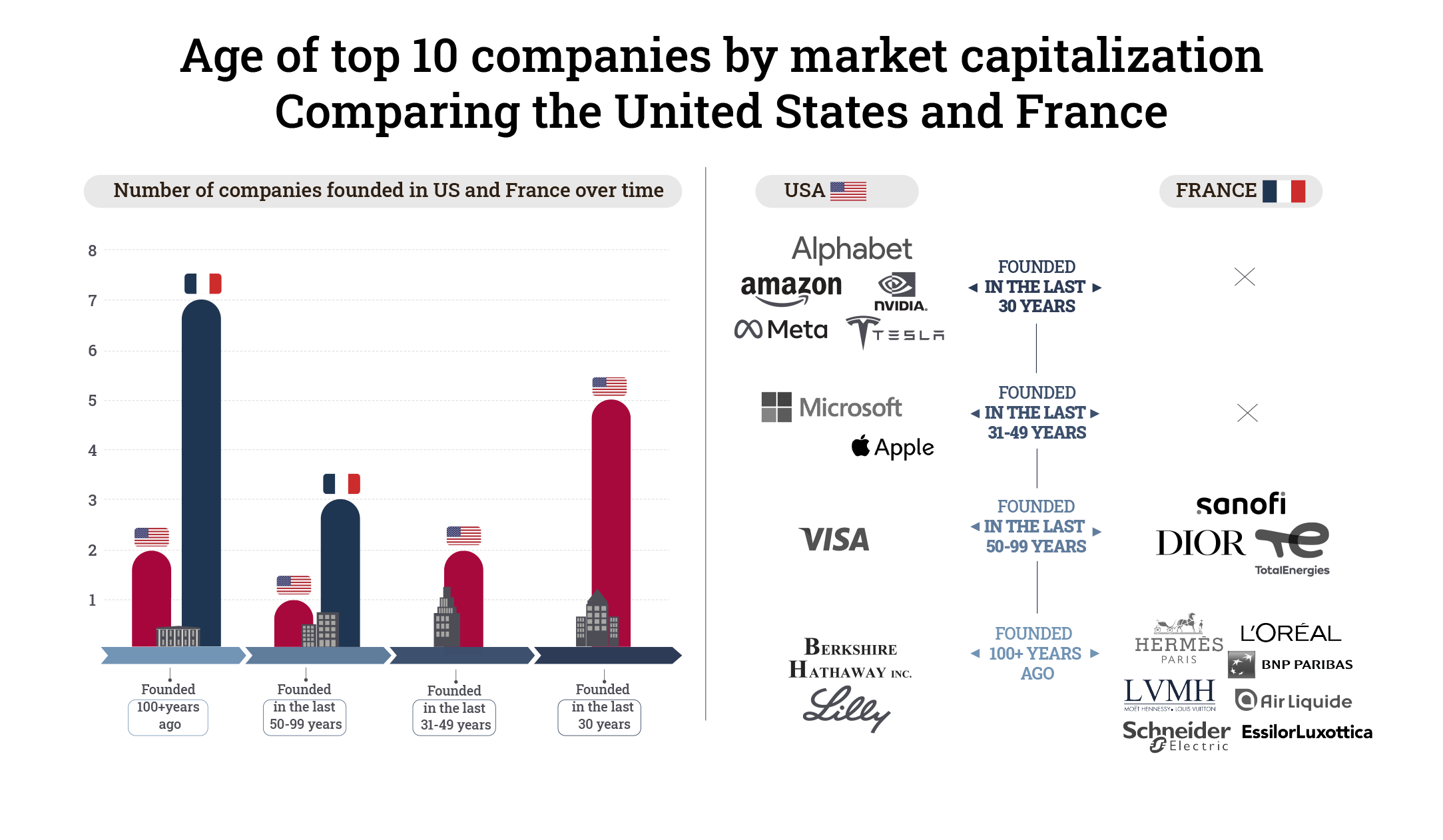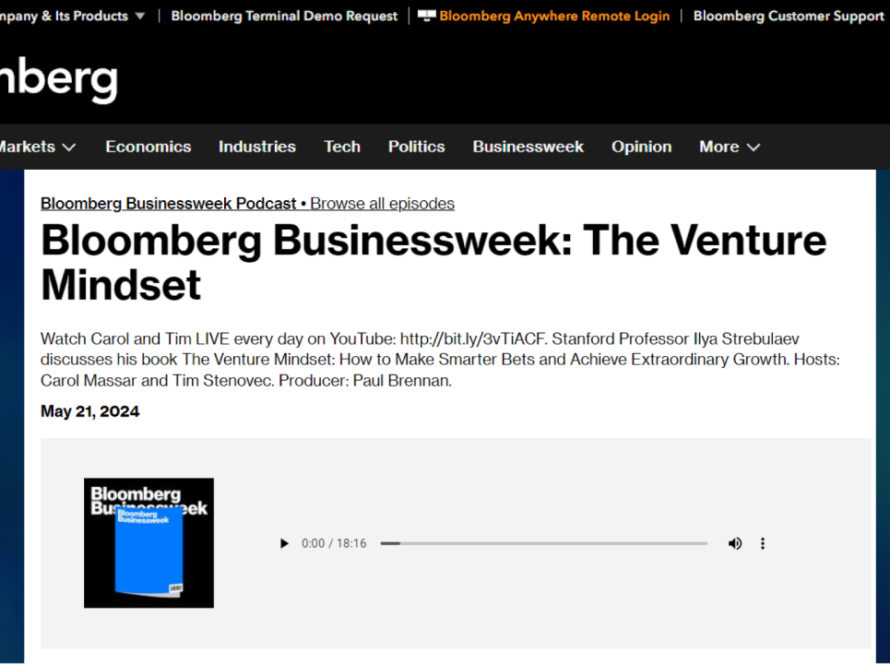When Ilya Strebulaev spoke on the “unicorn” panel at the major French tech conference Vivatech in July, they discussed the plans of the French leaders to have many VC-backed unicorns in France soon. He mentioned that a major challenge for France is not just the lack of unicorns but the lack of any major recently created companies. Have you heard of a French Google, or a French Amazon, or a French Netflix, he asked the audience.
The evidence speaks for itself. His team and Ilya took top 10 US companies by market cap and top 10 French companies by market cap as of August 2023. They carefully explored the history of every single company.
- 7 of top 10 US companies were VC-backed.
- None of top 10 French companies were VC-backed.
- 7 of top 10 US companies were founded within the last 49 years.
- None of top 10 French companies were founded within the last 49 years
- The youngest US company in top 10 is 19 years old.
- The youngest French company in top 10 is 50 years old.
- The mean (median) US company in top 10 was founded in 1963 (1985).
- The mean (median) French company in top 10 was founded in 1888 (1878) (not in 1988 and 1978!).
We can and should discuss the factors behind such dramatic differences and the trade-offs between stability and growth, mobility and rigidity, culture of innovation and traditions that such differences bring. When we speak to regulators and leaders, whether on panels or workshops, we spend a lot of time covering all these topics.
One might argue that the number of unicorns does not necessarily define the overall state of the (innovation) economy. A country might have a lot of small and mid-sized businesses that boost economic growth but are overlooked in unicorn and VC-focused research.
However, consider these important trends that echo my concerns.
The average US GDP growth between 1975 and 2022 was around 6% annually, while France’s GDP growth for the same period was around 4.4% annually.
Then, according to the World Bank data, the USA has 802 patent applications per million people in 2020. In France the equivalent number is 4 times lower: 198 patent applications per million people.
To the French leaders who would like to promote entrepreneurship and innovation: please mention these statistics to President Macron when you chat with him next time.
How do you interpret the differences between US and French growth, innovations, age of top companies? What should we do about it – if anything at all? Please share your thoughts in the comment section below.
Notes:
- For mergers and acquisitions, the founding year is determined by the main acquiring party or by the oldest of the two companies in case of the merger of equals.
- Data about the US and French GDP was taken from data.worldbank.org.
Thank you to the Stanford University Graduate School of Business Venture Capital Initiative for support.




